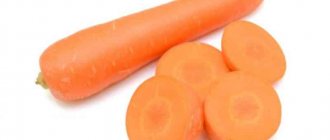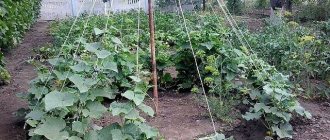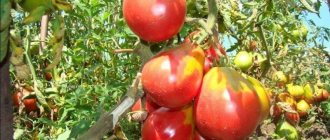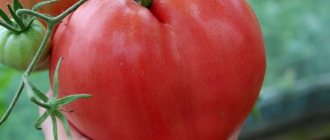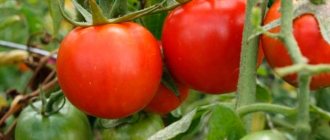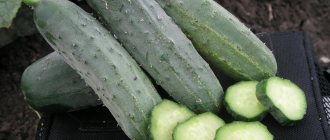Description
Nandrin f1 belongs to the Nantes variety , that is, it is distinguished by large cylindrical root crops, juicy and sweet pulp.
Origin and development
Carrot Nandrin f1 comes from Holland. The originator is the Dutch company Bejo zaden. The hybrid has not yet been included in the State Register of Breeding Achievements of the Russian Federation , but this does not prevent gardeners and farmers from cultivating the crop on their plots.
Chemical composition and beneficial properties
The root vegetable contains many vitamins and minerals . They have a healing effect on the entire body: they have a beneficial effect on the skin and hair, and digestion. Carrots are especially useful for the prevention of eye diseases due to their high vitamin A content.
Calorie content per 100 g – 33.1 kcal.
Nutritional value per 100 g:
- proteins – 1.4 g;
- fats – 0.1 g;
- carbohydrates – 6.8 g;
- water – 87.9 g;
- dietary fiber – 2.5 g;
- ash – 1.2 g;
- organic acids – 0.4 g;
Chemical composition per 100 g:
- vanadium – 98.9 mcg;
- iron – 0.8 mg;
- boron – 0.2 mg;
- vitamin A -32.1 mg;
- choline – 8.7 mg;
- vitamin C – 5.1 mg;
- potassium – 198.9 mg;
- magnesium – 37.8 mg;
- calcium – 28.1 mg;
- phosphorus – 54.8 mg;
- disaccharides - 6.6 g;
In addition, the root vegetable contains glucose, fructose, essential and essential amino acids. Carrots also contain polyunsaturated fatty acids in small quantities.
Interesting things on the site:
Ultra-early, unpretentious carrot hybrid Napoli f1
Carrot hybrid for long-term storage Canada f1
Early maturing, cold-resistant Dordogne carrot hybrid
Ripening period
Nandrin is an early ripening hybrid . The growing season lasts from 75 to 100 days.
Productivity
With proper care from 1 sq. m of plantings, 5-7 kg of root crops are collected . From 1 hectare – 50–70 tons of carrots.
Disease resistance
Nandrin f1 is resistant to Alternaria and Fusarium . In addition, the seeds are imported in processed form, so the hybrid is less susceptible to diseases dangerous to the crop.
Characteristic
Nandrin's root crops have an even cylindrical shape with a rounded end . Their color is bright orange. Carrot length – 12-14 cm, diameter – 2-3 cm. Weight – 160-200 g.
Important! The hybrid has virtually no core. For this reason, it is ideal for making baby juices and purees.
The fruit pulp is tasty and juicy . Can be consumed both raw and boiled.
Growing regions
carrots grow well in any climate . It is successfully cultivated in all regions of our country. Thanks to the short growing season, it has time to grow even in risky farming areas.
Carrot Nandrin: description and characteristics of the variety
Nandrin F1 is a variety of Nantes carrots. It is an early ripening hybrid. Nandrin root vegetables are perfectly cylindrical, with a rounded end and top. The flesh is reddish-orange with a sweet taste and a pleasant crunch. The root crop is durable and does not crack.
Technical characteristics of the Nandrin F1 variety:
- ripening: early, after 75–100 days;
- growing zone: Ukraine, Belarus, Moldova, Russia;
- growing features: grows well in sunlit areas with loose, fertile sandy loams or soil with a deep top layer;
- crop rotation: it is recommended to plant after cabbage, tomatoes, onions, cucumbers, early potatoes;
- sowing pattern: 4×15 cm;
- seed sowing depth: 1–2 cm;
- sowing rate: 1–1.6 g per 1 m²;
- Disease resistance: high.
Harvest characteristics:
- yield: 4.6–6.7 kg per 1 m²;
- weight of one root vegetable: 150–250 g;
- diameter: 3–5 cm;
- length: 16–20 cm;
- pulp: bright orange;
- shape: cylindrical;
- texture: smooth, does not crack, durable;
- commercial properties: high;
- taste qualities: sweet, tasty;
- Sugar content: 7.9 Brix.
Commercial root crops are uniform in size and shape, suitable for own consumption and for sale. Due to their good quality, they can be stored in winter, which extends the period of consumption of fresh carrots until early spring.
Did you know? No one knows exactly when people started eating carrots. The first mentions of its medicinal properties go back 5 thousand years.
History of the variety's creation
Most sources point to the Dutch origin of the Nandrin F1 variety. The Dutch company Bejo zaden is named as the originator. Unfortunately, there is no data on this variety in the company’s catalog. Probably the originator is another manufacturer. As for the purpose of selection, for Nantes carrot varieties, it goes in the direction of increasing the size of the root crop and improving its juiciness and sugar content.
Planting region and ripening time
Carrots are a cold-resistant crop, so they can be grown in any climate zone. Nandrin ripening occurs 75–100 days after planting.
The unique property of its root vegetables is that you can harvest them at any time. Their taste is at its maximum both at the beginning and at the end of development. And to eat it, it is not necessary to wait until the root vegetable reaches its maximum size.
Productivity of the variety
From 1 m² you can harvest from 4.5 to 6.7 kg of tasty root vegetables. The quality of the soil affects the yield. Since carrots are a root plant, they need loamy soils with good drainage and timely fertilizing to gain weight.
Disease resistance
Resistance to diseases determines the commercial characteristics of products. In particular, its keeping quality. When tested for resistance to alternal blight and fusarium blight, the variety showed 100% preservation of root crops.
Did you know? The first written sources that mention carrots speak of white and purple varieties, not orange.
Features of planting and growing
Carrots grow well on black soil in beds well lit by the sun.
Preparing for landing
Carrot seeds are very small. Germination rate is 60-70% , so it is recommended to treat them with a growth stimulator before planting. It affects plant hormones, stimulating its development.
Soil requirements
The vegetable is not picky about the choice of soil . It grows in both clay and sandy soils. But the ideal option would be black soil.
Important! If the site was fertilized with manure, you can plant carrots on it only after 3 years.
Soil acidity should be average - pH from 5.8 to 6.5. If the soil is too acidic, add garden lime to the garden bed 3 weeks before planting root crops.
Predecessors
Carrots take root best in places where onions, cucumbers or cabbage were previously grown . The worst predecessors are other plants from the Apiaceae family.
Dates, scheme and rules of planting
Depending on the climate, seeds are sown in April-May . Seeds are sown in moist soil, after loosening it, removing weeds and large clods of earth. Carrots are sown in furrows about 2 cm deep. Try to leave 10-20 mm between the seeds. The distance between rows is made within 18-20 cm.
Attention! Hybrid Nandrin can be planted throughout the spring, at the beginning of summer and at the end of autumn - for the winter.
After planting, it is advisable to cover the soil with agrofibre . The culture tolerates frosts down to –4°C. Shoots appear on the 16-17th day.
Features of cultivation
After germination, you should adhere to the following recommendations:
- regularly remove weeds and do weeding;
- thin out plantings;
- water, especially at the time of active development of the vegetable;
The root crop does not tolerate acidified and waterlogged soil .
Nuances of care
For full growth and development of the hybrid, basic agrotechnical measures are sufficient .
Watering mode
Over the entire growing season, only 3-4 waterings will be needed . Water consumption -40-60 l per 1 sq. m landings. 15-20 days should pass between waterings. The last time the crop is watered is 20 days before harvest. This will allow the fruits to firm up and extend their shelf life.
Thinning and weed control
The first thinning is done when the carrot sprouts become 3 cm. After the procedure, the distance between them should be 2 cm.
Thin out the second time when the sprouts become 0.5 - 1 cm in diameter. The distance between the bushes is 5-6 cm.
Be sure to clear the plantings of weeds . For carrots, overgrowing with weeds is detrimental. Loosening benefits the crop: the roots receive additional oxygen. After each watering, be sure to hand weed the plantings.
Diseases and pests of the variety
Twisted and deformed carrot roots are the result of too dense soil or the presence of lumps of earth. If you do not water regularly, the roots may crack or branch.
The spring (cabbage) fly is one of the main garden pests. As soon as the soil warms up to +10°C, flies lay eggs. The larvae that hatch from them damage heads of cabbage, carrot roots, onions and other crops. In this regard, farmers prefer to start sowing so that the fly breeding season does not coincide with the growth of the root crop - in the third ten days of April or early May. Infected roots stop developing and rot. The color of the roots becomes dark red, and the leaves turn black and wither. You can see the larvae if you dig up such a root.
Butterflies are not pests. But their caterpillars are capable of causing damage to crops. Anise swallowtail moth caterpillars may appear on leaves in May. These are small caterpillars whose bodies are alternating segments of black and yellow stripes.
Important! When choosing a pest treatment for root crops, look for an indication that toxins do not accumulate in the plant tissue. Also pay attention to the period after which carrots can be eaten.
The bright light green color
of the swallowtail butterfly is very beautiful and no less voracious.
If caterpillars are found, they can be collected manually. Birds are also a good means of control. It is advisable to attract them to the site. The following drugs are suitable for controlling caterpillars: “Lepidotsid”, “Biostop”, “Bitoxibacillin”. Do not exceed the dosage specified in the instructions for the drug, since birds also feed on dead caterpillars, and these drugs are toxic to birds. The weevil is another pest that affects carrot crops. To scare it away, neighboring crops are used. To effectively control nematodes, follow crop rotation, destroy affected plants and plant crops that are resistant to root pests.
The main ways to prevent pests:
- Planting aromatic plants that attract insects that destroy caterpillars - aster, nasturtium, fennel.
- Using mesh barriers to prevent butterflies from reaching your crops.
- Pest removal.
Harvest and storage
Hybrid carrots can be harvested throughout the entire growth period . But early fruits are poorly stored. For long-term storage, choose fully ripened root vegetables.
How and when to collect
The collection time depends on the timing of planting the crop . Considering that carrots grow on average 100 days, when planted in May, the harvest can be harvested in July-August. When planted in June, harvesting is carried out in September-October.
Ripe carrots are dug up using a pitchfork . Then it is carefully pulled out by the tops, shaken off the ground and laid on a bed to dry.
Storage features and shelf life of the hybrid
Before storing root vegetables, cut off the tops just above the crown and clean any excess dirt from the carrots.
It is better to store the harvest in boxes, putting sand or peat there . Place the container in a dry place at above-zero temperatures. It is advisable that the root vegetables do not touch. In this state, the Nandrin hybrid remains until March.
Description of the variety
Nandrin is an early-ripening variety of root crops that produces a bountiful harvest. Only 105 days after the first shoots hatched, and you can already harvest.
Its beautiful, juicy orange-red fruits are cylindrical in shape and have a blunt end. Such a carrot is 15-20 cm long, about 4 cm in diameter. And if you weigh the root crop, the scales can show up to 300 g. In cross-section, it is almost the same color as the outside.
The pulp, juicy, crisp and rich in carotene, is tasty both fresh and cooked as a dish.
It is this variety that is used for making juices – for children and for diet. Thanks to the small core and an impressive amount of pulp, a lot of juice is obtained from the root vegetable. It tastes sweet and is rich in vitamins, especially a lot of vitamin A. For anemia, this drink is the first assistant!
The variety is suitable both for cultivation on a production basis (for large sales) and for personal (family) consumption. Even in not very favorable weather, Nandrin produces a stable and decent harvest, and its excellent taste and visually pleasing appearance ensure that carrots are in demand and eaten with pleasure.
Origin and development
The variety of the developed hybrid root crop is Nantes/Berlicum. Seeds are transported all over the world from Holland, the historical homeland of the Nandrin hybrid. The seeds are treated with a special agent aimed at combating various diseases and at the same time having a repellent effect on carrot pests. It is better to keep this in mind when planting and plant the seeds without soaking.
The peculiarity of Nandrin as a variety is that the fruits of the plant have practically no core. Nitrates accumulate in this part of the root crop, so this characteristic is an additional plus for carrots as a food product.
Planting region and ripening time
The Nandrin variety is quite unpretentious. It is quietly planted in the northern regions, where summer ends quickly, and during this short period other varieties of carrots do not have time to ripen. Since this root crop is considered an early ripening variety with a growing season of 95-105 days, farmers have time to harvest in the center of Russia and even in its northern regions.
Carrot lovers, almost out of the snow, begin to harvest their first harvest already during the second thinning. Root vegetables at this time are only 1 cm in diameter, but this does not affect the taste in any way. For both those who are focused on sales and those who simply like to enjoy their early vegetables, the early ripening of carrots can only be beneficial.
The main harvest is harvested in the fall, just after the end of the hundreds of days of growing season described above.
Productivity
Nandrin F1 is not for nothing selected as a high-yielding variety. With proper care, it produces 5-7 kg of fruit per square meter. That is, large farms receive 50-70 tons of tasty and beautiful carrots from 1 hectare. If the garden is small and weeding and watering are done manually, you can harvest 8-9 kg per square meter.
Reviews of carrot hybrid Nandrin f 1
Gardeners who planted the hybrid on their plots generally leave positive reviews about it . Many people like its beautiful appearance and rapid maturation.
Nadezhda, Ivanovo : “I accidentally found out about Nandrin from a neighbor. I kept admiring her beds with beautiful and healthy carrots. Now I’ve been planting it on my plot for three years. I really like winter planting. In the spring, after the snow melts, shoots appear.”
Vasily, Arkhangelsk: “I used to not like fiddling with carrots. She grew small. But when my wife planted the Nandrin hybrid, I was pleasantly surprised by its size. Now I’m happy to harvest the harvest, which is still plentiful.”
Peter, Sterlitamak : “Once I read on the Internet about this hybrid. I decided to plant it in my garden. The carrots grew smooth and beautiful, and also tasty. But I tried to follow all the recommendations for growing, and the result was good.”
Pros and cons of the variety
No deficiencies were identified in the variety.
Description of carrot hybrid Baltimore f1
Root vegetables are shaped like a cone with a rounded tip. Their length is 22-25 cm, diameter is 3-5 cm, weight is 200-220 g. The skin is smooth, thin, and has a bright orange hue. The pulp is not loose, homogeneous, juicy, the core is thin. The hybrid has powerful, dissected leaves. The tops reach a height of 40 cm.
Origin and development
Baltimore F1 carrots were bred by Dutch breeding. The hybrid is part of the extensive Berlicum/Nantes varietal group. The selection was based on the Nandrin F1 variety.
Scientists have improved the original variety by crossing it with others. As a result of the work carried out, the taste quality has improved and the tops resistance to diseases has increased.
Baltimore F1 is a first generation hybrid. The seeds obtained from it will give a weak carrot harvest. Therefore, seed material must be purchased in stores.
Chemical composition and beneficial properties
100 g of carrots contain: fructose 8–9.5%, dry matter 11.6–12.4%, beta carotene 23.7 mg. The energy value of one fruit is 26 kcal.
Content of macroelements in fruits:
- potassium - 200 mg;
- calcium - 27.6 mg;
- phosphorus - 57 mg;
- magnesium - 39.1 mg;
- sodium - 20.4 mg.
Microelements content:
- iron - 740 mg;
- zinc - 420 mg;
- aluminum - 330 mg;
- manganese - 215 mg;
- boron - 205 mg;
- vanadium - 100 mg;
- copper - 82.2 mg;
- fluorine - 53.7 mg;
- molybdenum - 21.6 mg.
Composition of vitamins:
- A - 9.2 mg;
- B1 - 0.06 mg;
- B2 - 0.07 mg;
- B8 - 29.3 mg;
- B9 - 0.1 mg;
- C - 5.8 mg;
- RR - 1.2 mg;
- E - 0.9 mg.
Carrots have always been used as an additional remedy to medications for the treatment and prevention of various diseases.
The vegetable is useful for diseases of the heart, gastrointestinal tract, anemia, pneumonia, bronchial asthma, pyelonephritis.
Carrot juice normalizes acidity during gastritis, increases appetite, neutralizes the effect of antibiotics on the body, and improves vision.
Productivity
The performance of the hybrid is at a high level. The yield per hectare with proper agricultural cultivation technology is 335 - 605 centners.
Disease resistance
The hybrid is resistant to fungal infections and powdery mildew. But the crop is often affected by dry, white and gray rot. To prevent diseases, potassium fertilizers are added to the soil and the tops are treated with Bordeaux mixture.
Characteristics, appearance and taste
The hybrid is classified as mid-season, the ripening period is about one hundred days. Tolerates temperature changes well.
Baltimore has well-developed tops, up to 60 cm high. This allows large areas to be harvested using mechanized equipment.
The leaves of the tops are carved, rich green in color, with a noticeable waxy coating. The stem is light green in color, slightly thickened.
The hybrid's root crops look attractive: they have an even cylindrical shape with a rounded tip. The fruits are approximately the same size, length - 22-25 cm, weight - 200-220 g, diameter at the base - 3-4 cm.
The skin is thin, the color ranges from orange to dark orange. The core is thin and does not separate from the pulp.
The hybrid has excellent taste. Root vegetables are juicy, crunchy, sweet and firm. Used for baby and diet food.
For which regions is it best suited?
Thanks to its fast ripening time and excellent frost resistance, Baltimore F1 is grown even in the northern part of Russia.
The hybrid is suitable for cultivation in the Central, Northwestern, Western and Eastern Siberian, Far Eastern, Volga-Vyatka, Lower Volga and Ural regions. The best yield indicators are in the Central region of Russia.
Rules of agricultural technology for Nandrin F1 carrots
This variety does well in light soil with low acidity. It likes watering, but not excessively, since waterlogged and heavy soil is not suitable for this carrot.
Carrots are a fairly cold-resistant plant; for germination it is enough for the ground to warm up to 3-4 degrees. There is no need to worry if there is another frost after sowing.
Even emerging seedlings are not afraid of frost down to -4 Celsius. Carrot seeds are small, the content of essential oils in them is quite high, which slows down the germination process. Shoots appear only 14-16 days after sowing.
You can regulate the time of fruit ripening by several sowings:
- In order for fresh carrots to appear on the table as early as possible, they should be sown in winter, around mid-October, while there is no snow.
- If you sow Nandrin carrots in the spring, as mentioned above, it will be available in August.
- To harvest the crop in late September-early October for storage, sowing must be done in mid-June.
Before sowing, it is necessary to remove all weeds and thoroughly loosen the soil in the garden bed. Make grooves at a distance of 15-20 centimeters from each other. Place the seeds in these grooves, keeping 1-2 cm intervals between them, so as not to do thinning in the future, which could cause injury to the plants.
Conditions for obtaining a good harvest
- It is important to choose the right place to plant. There should be no weeds in the garden bed, especially large ones like wheatgrass. It is good to plant carrots after cucumbers, onions, cabbage, and nightshade crops, since organic fertilizer is usually applied to them, which is quite enough for carrots.
- Soil acidity should not be high, within 6-7 units.
- It is better to fertilize the soil before sowing carrot seeds only with complex mineral fertilizers.
How to care for carrots
- When the seedlings reach about three centimeters, they need to be thinned out so that the distance between the plants is about two centimeters.
- After some time, when the diameter of the root crop becomes 0.5-1 cm, thinning should be done again. Now leave 4 to 6 centimeters between the carrots.
- Weeding is very important during this period. In order for the plant to gain strength, nothing should interfere with it and take nutrients from the soil. Therefore, all weeds should be removed, and then loosened between the rows to ensure oxygen access to the root crop.
- While the fruit is filling, it needs watering, not too frequent and not too abundant (5-6 liters of water per 1 m2).
When to Harvest
The earliest harvest of Nandrin carrots is obtained during the second thinning. At this time, the root crop reached a size of about 1 cm in diameter, which indicates its suitability for food. This is especially valuable at this time of year, since there are still few ripe vegetables in the garden.
When the fruits sown in June are fully ripe, they need to be dug up with a pitchfork, carefully pulled out by the tops, shaken off the ground and folded along the edges of the bed to dry. After 3-4 hours, you can start preparing the carrots for storage, that is, cut off the tops, sort the fruits by size, small ones can be used for animal feed or juice, put medium and large fruits in a container, sprinkled with dry sand or sawdust. Put it in the cellar.
Read also: How to feed strawberries in early spring before flowering for a better harvest, fertilizing strawberries with mineral and folk remedies
If agrotechnical rules are followed, the Nandrin F1 carrot harvest will be excellent. Farmers and amateur gardeners give good reviews about the Nandrin hybrid. It is most valued for its high resistance to diseases and pests, abundant harvest, keeping quality, excellent taste characteristics and uniformity of fruits.
